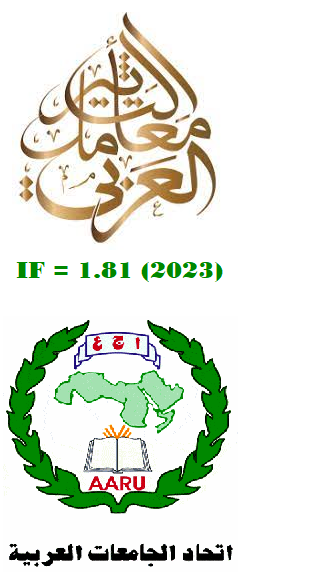Teachers’ Strategies to Build and Maintain Rapport with Students at Department of Medical Biochemical Analysis, Cihan University-Erbil
Abstract
Building and maintaining rapport between teachers and students, and their effect on student’s learning outcomes and classroom environment, this research examines which strategies lecturers use to build and maintain rapport with their students at the Medical Biochemical Analysis department at Cihan University-Erbil. Participants (N=100) answered open-ended survey questions about strategies for rapport-building. A total of (12) strategies for building and maintaining rapport include: using the whole first day, exercising self-disclosure, recognizing students, becoming acquainted with students, being accessible, starting warmly, emphasizing student-centered learning, gathering student feedback, authenticity, listening to students, respecting students, and fairness/ being even-handed. Furthermore, ten educators were interviewed to determine the approach they employed to establish and sustain a positive learning atmosphere and achieve successful results. The findings suggest a moderate correlation between educators and learners, with the latter searching for their instructors to exhibit affirmative dispositions in augmenting their academic achievements.
Downloads
References
Anderson, J.A. (1999). Faculty responsibility for promoting conflict-free college classrooms. New Directions for Teaching and Learning, 1999(77), 69-76.
Buskist, W., & Saville, B.K. (2001). Creating Positive Emotional Contexts for Enhancing Teaching and Learning. United States: Association for Psychological Science Observer, 14, 12-13.
Carson, B.H. (1996). Thirty years of stories: The professor’s place in student memories. Change, 28(6), 10-17.
Catt, S., Miller, D., & Schallenkamp, K. (2007). You are the key: Communicate for learning effectiveness. Education, 127, 369-377.
Curzan, A., & Damour, L. (2006). First Day to Final Grade: A Graduate Student’s Guide to Teaching. 2nd ed. Ann Arbor: The University of Michigan Press. Dörnyei, Z. (2001). Motivational Strategies in the Language Classroom. Cambridge: Cambridge University Press.
Duffy, D.K., & Jones, J.W. (1995). Teaching Within the Rhythms of the Semester. San Francisco: Jossey-Bass.
Fink, L.D. (1984). First year on the faculty: Being there. Journal of Geography in Higher Education. 8(1), 11-25.
Fleming, N. (2003). Establishing Rapport: Personal Interaction and Learning. IDEA Paper no 39.
Frisby, B.N., Berger, E., Burchett, M., Herovic, E., & Strawser, M.G. (2014). Participation apprehensive students: The influence of face support and instructor student rapport on classroom participation. Communication Education, 63(2), 105-123.
Gersh, B. (2013) How can a Teacher form a Working Alliance with a Traumatised Student? A Rationale and Advice for Implementation. University of Melbourne. (Masters Thesis).
Gillespie, F. (1997). The phenomenon of large classes and practical suggestions for teaching them. In: Essays on Teaching Excellence. Vol. 8. United States: Professional and Organizational Development Network.
Harmer, J. (2007a). How to Teach English. Harlow: Pearson Longman, ELT.
Harmer, J. (2007b). The Practice of English Language Teaching. 4th ed. Harlow: Pearson Longman, ELT.
Hoyt, D.P., & Lee, E.J. (2002). Disciplinary Differences in Student Ratings (Technical Report No.13). Manhattan, KS: The IDEA Center.
Lewis, T. & Claridge, M.T. (2005) Coaching for Effective Learning: A Practical Guide for Teachers in Health and Social Care. Oxford: Radcliffe Publishing.
Lowman, J. (1995) Mastering the Techniques of Teaching. 2nd ed. San Francisco: Jossey-Bass.
Lumsden, L. (1994). Student Motivation to Learn, ERIC Clearinghouse on Educational Management. United States: ERIC.
McKeachie, W.J. (2002). McKeachie’s Teaching Tips: Strategies, Research, and Theory for College and University Teachers. 11th ed. Boston: Houghton Mifflin Co.
Morss, K., & Murray, R. (2005). Teaching at University: A Guide for Postgraduates and Researchers. London: SAGE Publications.
Nilson, L.B. (2010). Teaching at Its Best: A Research-Based Resource for College Instructors. 3rd ed. San Francisco: Wiley, John and Sons.
Ramsden, P. (2003). Learning to Teach in Higher Education. 2nd ed. New York: Routledge Falmer.
Resham, A. (2017). Rapport building in classroom: Strategies and role in learners’ performance. Tribhuvan University Journal, 1(1-2), 185.
Scrivener, J. (2011). Learning Teaching: The Essential Guide to English Language Teaching. 3rd ed. Oxford: Macmillan Education.
Scrivener, J. (2012). Classroom Management Techniques. Cambridge: Cambridge University Press.
Vishal, D.S., & Gomatesh, S.P. (2019). Construction equipment monitoring: By using relative important indices (Rii) analysis. International Research Journal of Engineering and Technology (IRJET), 6(11), 261-262.
Walsh, D.J., & Maffei, M.J. (1994). Never in a class by themselves: An examination of behaviors affecting the student-professor relationship. Journal on Excellence in College Teaching, 5(2), 23-49.
Walsh, D.J., & Maffei, M.J. (1996). Never in a class by themselves: An examination of behaviors affecting the student-professor relationship. Essays on Teaching Excellence-Professional and Organizational Development Network, 7(2), 23-49.
Wooten-Blanks, L. (2012). Building rapport with students by sharing a piece of yourself. In: Effective Teaching Strategies for the College Classroom. United States: Faculty Focus.
Copyright (c) 2024 Dashne A. Saeed

This work is licensed under a Creative Commons Attribution-NonCommercial-NoDerivatives 4.0 International License.
Authors who publish with this journal agree to the following terms:
1. Authors retain copyright and grant the journal right of first publication with the work simultaneously licensed under a Creative Commons Attribution License [CC BY-NC-ND 4.0] that allows others to share the work with an acknowledgment of the work's authorship and initial publication in this journal.
2. Authors are able to enter into separate, additional contractual arrangements for the non-exclusive distribution of the journal's published version of the work (e.g., post it to an institutional repository or publish it in a book), with an acknowledgment of its initial publication in this journal.
3. Authors are permitted and encouraged to post their work online (e.g., in institutional repositories or on their website) prior to and during the submission process, as it can lead to productive exchanges, as well as earlier and greater citation of published work (See The Effect of Open Access).









